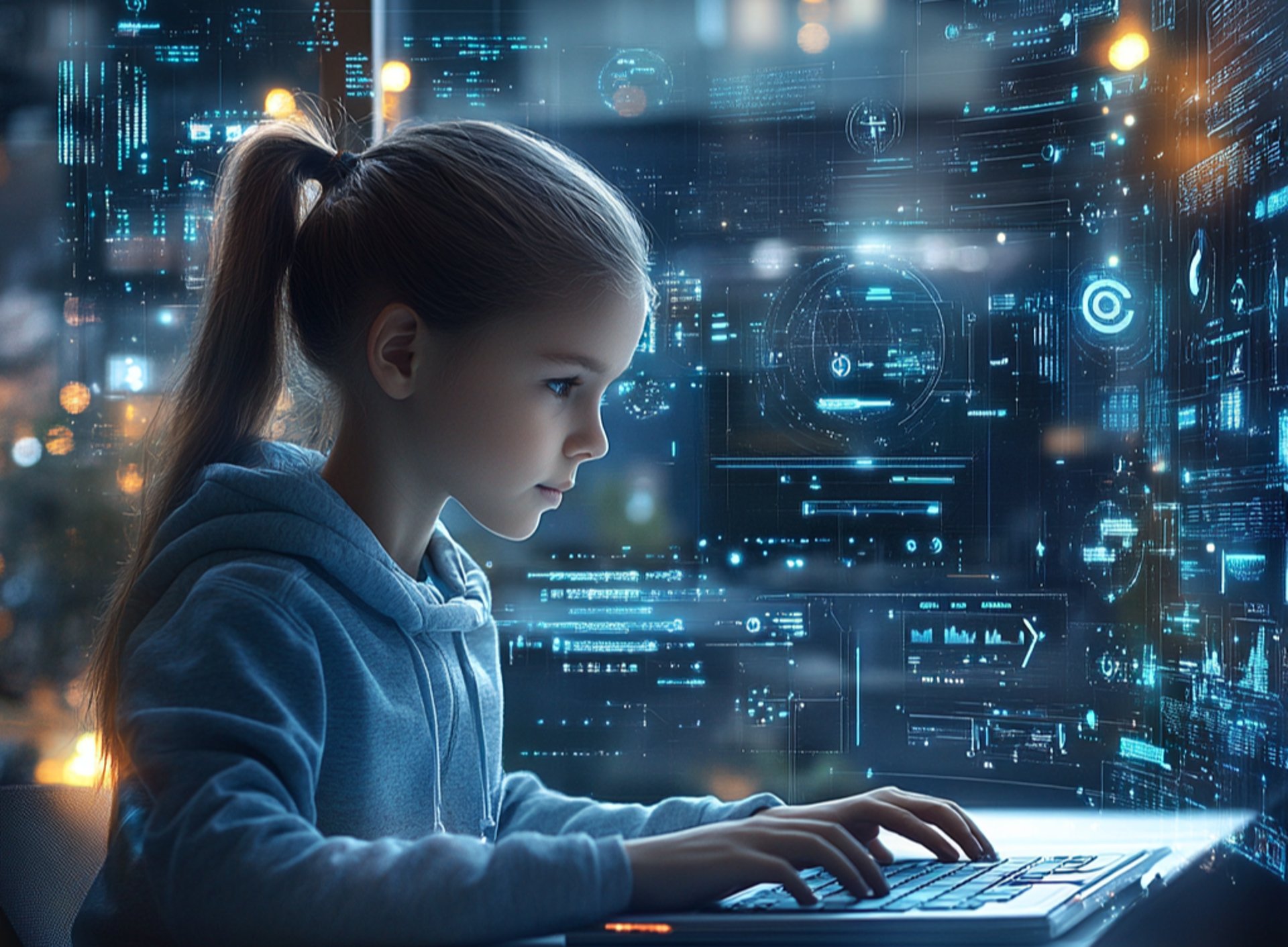FREE ECONOMY SHIPPING ON ORDERS OVER $35

Reimagining Education
How Artificial Intelligence is Reshaping Education for the Next Generation
2/2/20253 min read
AI is fundamentally changing the way children learn, creating a more personalized and adaptive educational experience than ever before. Imagine a classroom where every student has their own personal tutor who knows exactly how they learn best, adjusts to their pace, and helps them overcome specific challenges. This is what AI is bringing to education, and it's just the beginning.
Understanding the AI Learning Revolution
Think of AI in education like a smart assistant that works alongside teachers and students. It observes how each child learns, identifies patterns in their progress, and adjusts teaching methods in real-time. For example, if a student consistently struggles with certain types of words or math problems, the AI system notices this and provides extra practice in these areas, all while keeping the student engaged and motivated.
In reading and writing, AI tools are particularly revolutionary. They can listen to students read aloud, correcting pronunciation instantly and tracking improvement over time. These systems can also suggest books that match both a student's reading level and their interests, making reading more enjoyable and less frustrating. For writing, AI can provide gentle feedback on grammar and structure, helping students improve their skills without feeling overwhelmed or discouraged.
The Teacher's New Toolkit
For teachers, AI is like having a highly skilled teaching assistant. It handles many time-consuming tasks, such as grading basic assignments and tracking student progress, giving teachers more time to focus on what they do best: inspiring students, explaining complex concepts, and providing emotional support. AI systems can generate detailed reports about each student's progress, helping teachers identify who needs extra help and in what areas.
AI also helps teachers create customized lesson plans and homework assignments. Instead of using a one-size-fits-all approach, teachers can use AI to generate different versions of assignments that match each student's level while working toward the same learning goals. This means struggling students aren't left behind, and advanced students remain challenged and engaged.
Beyond Basic Skills
The impact of AI in education goes far beyond just reading, writing, and arithmetic. Modern AI systems can help students develop critical thinking skills through interactive problem-solving exercises that adapt to their responses. They can simulate scientific experiments, create virtual art studios, and even help students learn music through personalized feedback on rhythm, pitch, and composition.
Language learning is another area where AI shines. AI-powered language programs can engage students in natural conversations, correcting their pronunciation and grammar in real-time. These systems can also create immersive experiences where students practice new languages in virtual environments, making language learning more practical and engaging.
Addressing Challenges and Concerns
While the benefits of AI in education are significant, there are important challenges to consider. Access to AI-powered educational tools isn't universal, which could widen the gap between well-funded and under-resourced schools. There's also the concern about screen time and ensuring children maintain healthy social interactions and physical activities.
Privacy is another crucial consideration. As AI systems collect data about student performance and learning patterns, it's essential to protect this sensitive information. Schools and educational technology companies must implement strong security measures and be transparent about how student data is used.
The Human Element
Despite all these technological advances, the human element in education remains irreplaceable. AI can't replace the empathy, creativity, and emotional intelligence that teachers bring to the classroom. Instead, AI should be viewed as a tool that enhances human teaching capabilities rather than replacing them.
Teachers still play a crucial role in helping students develop social skills, emotional intelligence, and critical thinking abilities. They provide encouragement, motivation, and the human connection that's essential for effective learning. AI supports these efforts by handling routine tasks and providing data-driven insights that help teachers make more informed decisions about their teaching strategies.
Looking to the Future
As AI technology continues to evolve, we can expect to see even more innovative applications in education. Virtual and augmented reality powered by AI might create immersive learning experiences that make abstract concepts more tangible and understandable. AI could help identify learning disabilities earlier and more accurately, leading to better support for students who need it.
The key to successful implementation lies in finding the right balance. Schools need to integrate AI tools thoughtfully, ensuring they enhance rather than detract from the learning experience. This means providing adequate training for teachers, maintaining appropriate technology infrastructure, and regularly evaluating the effectiveness of AI-powered learning tools.
Making It Work for Everyone
For AI to truly transform education, it needs to be accessible to all students, regardless of their background or circumstances. This means addressing the digital divide by ensuring all schools have access to necessary technology and internet connectivity. It also means developing AI systems that can work with students from diverse backgrounds and with different learning needs.
The goal isn't to create a completely automated education system but to enhance traditional teaching methods with tools that make learning more effective, engaging, and personalized. When implemented thoughtfully, AI can help create an educational environment where every student has the opportunity to reach their full potential.
As we continue to explore and develop AI's role in education, the focus should remain on supporting both students and teachers in creating more effective, engaging, and equitable learning experiences. The future of education isn't just about technology – it's about using technology to bring out the best in human learning and teaching capabilities.
Subscribe to our newsletter

